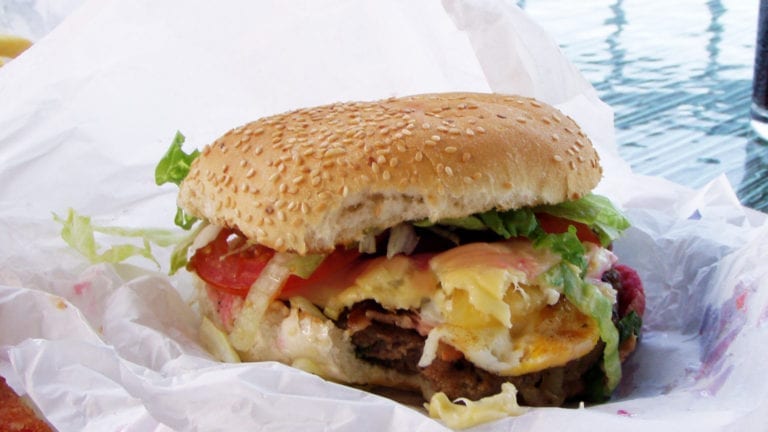
From the Frederick News Post: Green Section
One of the most frequently lobbed criticisms against organic, natural, and sustainably produced food is the cost. It is true that food produced by industrial agriculture (aka Big Ag) does tend to be less expensive than that produced by small landholders using ecological methods. However, there are hidden costs behind cheap food. If the actual cost of our modern food system were revealed, most people would agree that so-called “cheap” food is not even remotely affordable.
When I field the inevitable question about why much of the food in natural food stores is more expensive than that in conventional grocery stores, I introduce the idea of the “true cost of food.” When food is priced so low, someone is getting short-changed somewhere along the production line, and someone or something else is paying the price. The consumer—that is to say, all of us—pay the price eventually, but in a way that is so indirect and diffused it is hard to recognize.
Perhaps it is the farmers, producers, or laborers that are getting sub-subsistence wages and no benefits such as health insurance, overtime pay, or workers’ compensation. According to the Pesticide Action Network, today, over 90% of U.S. farmers are forced to rely on off-farm income. In 1930, that number was 30%. Other serious hazards common to workers on industrial farms are pesticide exposure and inhalation of harmful gasses generated by Concentrated Animal Feeding Operations (CAFOs).
Alternatively, the short-changing comes in the form of inferior ingredients—cheap fillers from questionable sources that bulk up a product with quantity (calories) but not quality (nutrition). Low cost, low-quality food is having significant consequences in the U.S. and, increasingly, around the world. A 2012 study published in ISRN Endocrinology found that obesity and diabetes are increasing in prevalence worldwide. Despite excessive dietary consumption, obese individuals have high rates of micronutrient deficiencies. These deficiencies may play important roles in the development of diabetes in obese people.
Two other major areas where hidden costs can show up are in the inhumane treatment of livestock on factory farms, which leads to other environmental and health consequences. Animals raised in CAFOs spend the bulk of their lives on concrete floors in stressful, crowded conditions that contribute to illness and injuries. Many of these animals are treated with low doses of antibiotics to increase their growth and stave off infections. The antibiotics are showing up in our vegetable crops fertilized with livestock manure. The practice of using antibiotics so widely in livestock is giving rise to antibiotic-resistant strains of bacteria, and robbing us of one of our most powerful tools against bacterial infections.
When food is priced below what it truly costs to produce it, the deficit will be paid somewhere else along the line with our health and that of our food producers, our health care system, animals suffering inhumane treatment, or harm to our environment. All too frequently, it is all of these combined.
I realize that this litany of agricultural evils is somewhat depressing to contemplate. Moreover, this is not even a comprehensive list of all the hidden costs of cheap food. However, there are alternatives to food produced by the industrial agriculture system that can and should be considered. By considered I mean sought out and supported—made viable with our personal, political, and professional actions. In short, we need to put our money where our mouths are.
The alternatives are many but will remain harder to find until they are made standard by people’s buying preferences. These foods may have a higher price tag, but think of that price as an investment in healthier children, better treatment for workers, more resilient ecosystems, and a more sustainable food system. That price is one you can decide whether you can afford to pay or not.
Buy locally grown and produced food from farmer’s markets, purchase CSA shares, and shop co-ops. Look for fair trade alternatives to foods like coffee, chocolate, and bananas that are typically produced using exploitative labor practices. Purchase humanely raised animal products. Talk to farmers. Maybe even grow your food.
Virginia-based sustainable farmer, author, and ag renegade Joel Salatin suggested that we will not fix our food system with one big answer, but with “many small elegant solutions.” I invite everyone to find out about some of these elegant solutions by checking out the TEDxManhattan event, “Changing the Way We Eat” on March 7. The Common Market will be hosting a viewing of the first two sessions. It is a free event, and a terrific opportunity to get infused with hope. Go to commonmarket.coop to find out more.
Zoe Brittain is a thinker and an eater (not necessarily in that order), and a hopeless organic romantic with an insatiable curiosity. She is the self-styled education specialist for the Common Market where she has been roaming the aisles since she was knee-high to the bulk bins.
